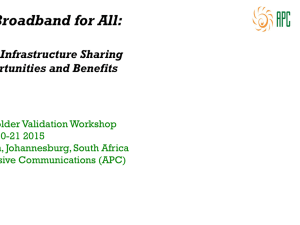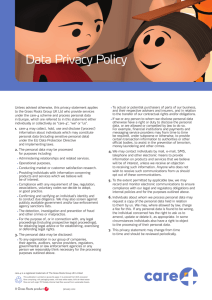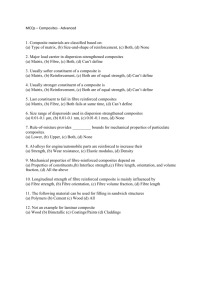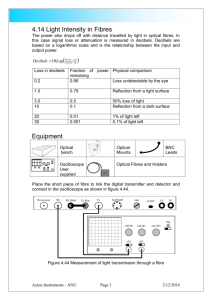Infrastructure Sharing Presentation-2 PM
advertisement
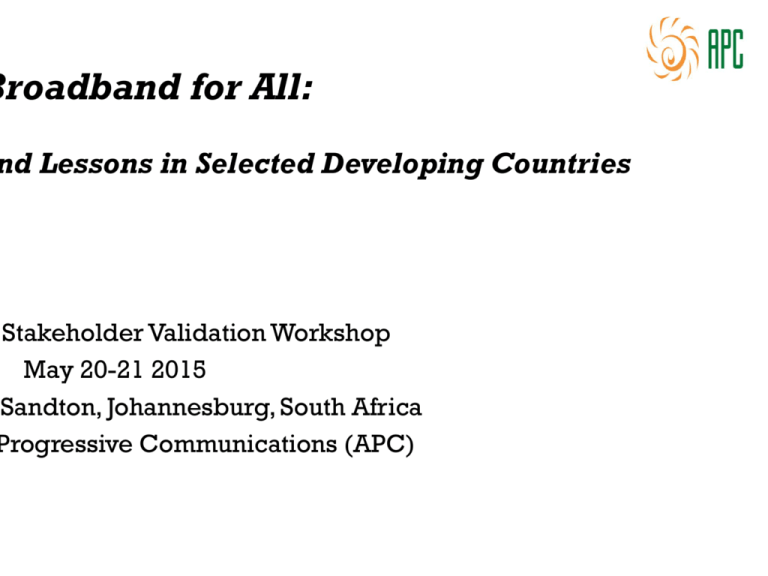
Broadband for All: nd Lessons in Selected Developing Countries Stakeholder Validation Workshop May 20-21 2015 Sandton, Johannesburg, South Africa Progressive Communications (APC) Cross Sector Infrastructure – the case of African Union - PIDA All projects in PIDA’s energy and transport sector priority action plan (PAP) propose fibre-optic investments along power transmission lines, roads and railways PIDA’s Terrestrial Connectivity project estimates that in Africa at least 22 cross-border links are necessary PIDA aims to align many of these projects with transport sector projects An example of such an initiative is the terrestrial optic fibre cable that is being deployed with an oil pipeline connecting Algeria via Niger to Nigeria. There are also plans for a Trans-Saharan highway on the same route that will include ducts and fibre anding Station ian example The Cable Consortium of Liberia (CCL) is a PPP based CCL was set up as a Special Purpose Vehicle (SPV) ow Burundi Backbone System (BBS) Example The government created a PPP formed as a joint venture between four of the country’s telecom operators and one ISP with World Bank providing the government with a grant of US$11.5m to help finance the US$25m project Although the BBS has been relatively successful, some implementation issues have emerged The government commissioned a separate Metropolitan Area Network (MAN) in Bujambura to connect government institutions with fibre. This was seen as a sign of disengagement with the BBS which was also being constructed in Bujumbura. Also the government awarded an additional licence to Viettel who are rolling out their own national 3G network without using the national backbone which potentially jeopardises the return on the investment for the operators Source: APC/Deloitte Study 2015 South Africa – Govt and Private Sharing Broadband InfraCo, a South African state-owned enterprise, was founded in 2007 to help drive down the costs of terrestrial fibre by consolidating the fibre networks of the electricity provider Eskom and national rail company Transtel. To facilitate the entry of a second national operator, initially Infraco leased its network only to Neotel, and then in 2010, Infraco opened services to other operators Launch was delayed due coordination issues between the shareholder - the Department of Public Enterprises, and the Department of Communications, which was responsible for the licensing. This delay was partly responsible for other operators deciding to develop their own fibre networks, which has impacted the effectiveness of the InfraCo business model Up to 2009 the competitors Neotel and MTN were both dependent on Telkom for leasing infrastructure, reportedly paying over ZAR1bn of transmission costs / yr To reduce costs and expand, Neotel and MTN agreed in 2009 for the joint construction of a national fibre optic network, joined by mobile operator Vodacom one month later Source: APC/Deloitte Study 2015 National Optical Backbone in Cote d’Ivoire While Cote d’Ivoire has a high mobile penetration rate (91%), the country had only about 1m internet users by 2013. Currently, 85% of internet users reside in the capital Abidjan. In order to bring broadband access to the country’s more rural areas, the government began construction of a stateowned National Fibre Optical Backbone in 2012. The proje`ct is financed with the help of the National Telecommunications Fund, which is funded by taxes paid by operators. Upon completion, the network is expected to measure 6,700km and connect up to 30% of the country’s population to the internet. Phase I was completed in 2012 and Phase started in 2013. Source: APC/DeloitteII Study 2015 In 2011, the Indian govt launched the National Optical Fibre Network (NOFN), which aims to connect all 250,000 gram panchayats (village-level administrations). This will be achieved by sharing existing fibre infrastructure of public telecom and utility operators such as BSNL, Railtel and Power Grid and by deploying additional fibre, where necessary To identify connectivity gaps, the National Informatics Centre carried out GIS mapping of the existing optical fibre networks to determine needs for deployment of new fibre. The project is estimated to cost USD$4 billion and is funded by the Universal Service Obligation Fund (USOF) The NOFN was supposed to be completed within two years; however, due to delays caused by factors such as tendering processes, the deadline has been extended to June 2016 Source: APC/Deloitte Study 2015 Other National Fibre Projects The Indonesian Palapa Ring project to connect the islands through a fibre network (PPP) Shared govt networks in Kenya, Rwanda and Ug Phase3 in Nigeria operates a fibre company that The Doba-Kribi oil pipeline between Cameroon a Colocation Regulations Nigeria has adopted infrastructure sharing requirement Any operator may request another operator to share its A dispute arose between operator Multi-Links and oper Africa’s rising tower business and the case of Eaton Source: APC/Deloitte Study 2015 In 2013 17% of Africa’s 150,000 towers were owned or operated by towercos, this is expected to reach 50% by the end of 2015 Eaton Towers, a pan-African tower company has sale and lease back agreements with Orange and Warid in Uganda; outsourcing of operations agreements with Orange and Telkom in Kenya; and with Vodafone in Ghana. Besides the maintenance of existing sites the deals also involve the construction of new towers to expanding operator coverage while reducing cost With about 2,400 towers, Eaton Tower’s is currently the fourth largest tower company in Africa Malaysia & India Mobile Strategies Malaysia Communications and Multimedia Commission (MCMC) identified infrastructure sharing as one of the criteria for issuing licences for 3G mobile spectrum. Applicants must show that they can and will share infrastructure, including physical facilities and network capacity. The aim was to maximize use of existing network resources, including capacity, base stations and backbone facilities The Indian Universal Service Obligation Fund launched a scheme in 2008 to provide subsidies for setting up towers in rural areas with no wireless coverage. Subsidies are only given for infrastructure that is shared by at least three operators. Similar policy in Papua New Guinea Other Tower Sharing Examples India pioneered the market for tower sharing, with ov In Nigeria, an estimated 4,500 are owned by Towerc In South Africa, MTN and Telkom Mobile were discus In Madagascar, a tower sharing regulatory framewor In-Building Duct Requirements In Rwanda, it is mandatory for every new housin In Botswana planning permission requires inclus Planning and Co-ordination Policies Multi-sectoral infrastructure databases and GIS In Germany, the Federal Network Agency has a database cal Data comes from operators in telecom, energy and transport The Atlas includes information from 650 infrastructure owners Initially, provision of data was voluntary, but after a change in Planning and Co-ordination Policies Multi-sectoral infrastructure databases and GIS In Turkey, a database called EHAB Systems is being ma Operators and analysts in Turkey have noted that the EH In India and Namibia, the telecom regulators require all li Key Policy Issues for Infrastructure Sharing In-building planning requirements e.g Botswana, Rwanda Active infrastructure sharing – wholesale & retail e.g Mobile Roaming, and Wholesale networks (govt SA Broadband Infraco, Liquid Duct sharing policies & dig-once land-use planning e.g France Standards for Infrastructure deployment over Rights of E.g Zambia Key Policy Issues for Infrastructure Sharing Limiting cost and procedures for rights of way E.g. Brazil Pole rental price caps, SA Rapid Simple cross-border digging procedures E.g. EAC one stop shop, Zimbabwe? Fair/open access to fibre backbones and submarine E.g. ACE Landing stations & national wholesale Multi-sectoral infrastructure databases and GIS E.g., Germany and Turkey, Seychelles Identification of Policy Development Needs Guidelines and template regulations for Infrastructure S National Standards for infrastructure deployment Funding Strategies for Duct Inclusion in Utility Infrastruc Multi sector Infrastructure Co-ordination Databases Regulatory mechanisms for data acquisition Role of government in national broadband wholesale ne In-building planning requirements Rights of Way policies and tariff caps Cross-border deployment procedures Environmental Impact Assessments ank you! r Progressive Communications ttp://www.apc.org


